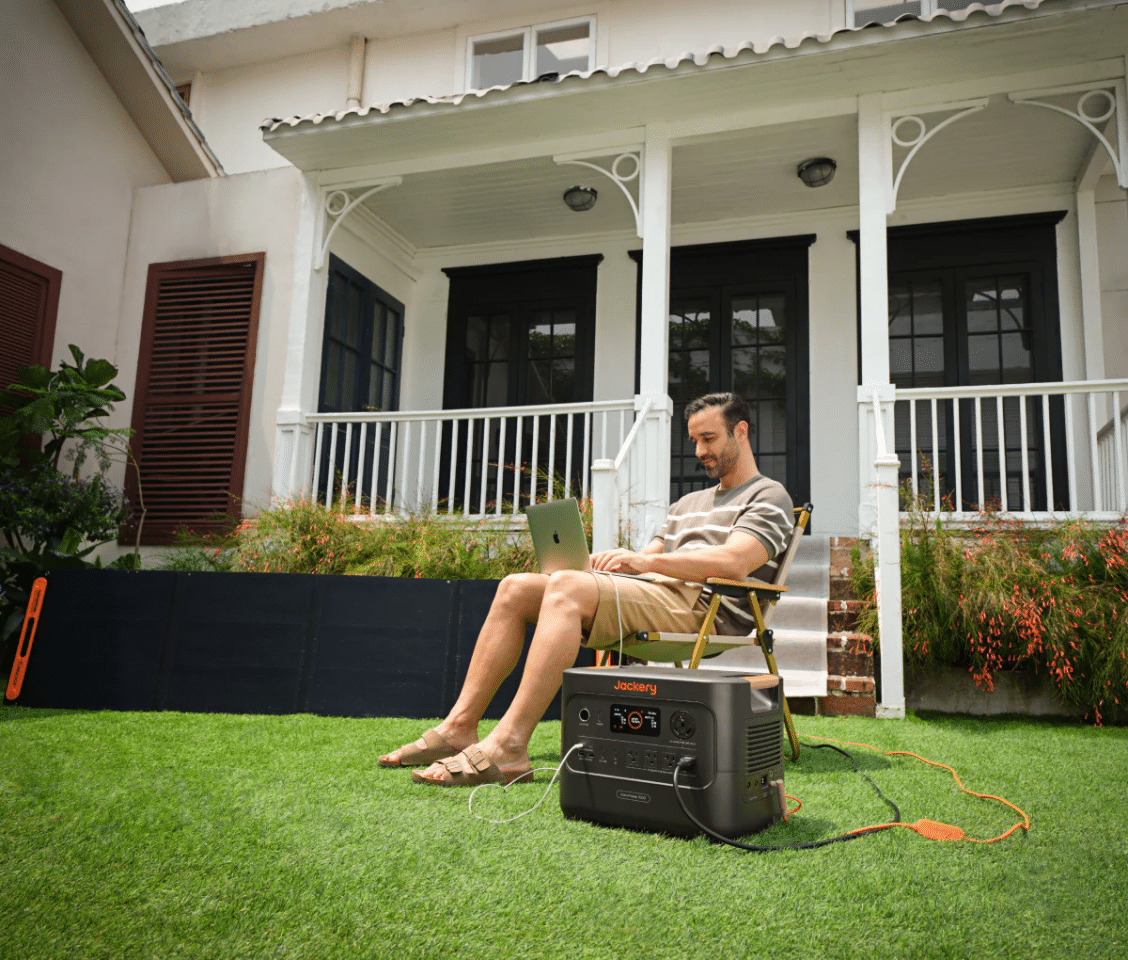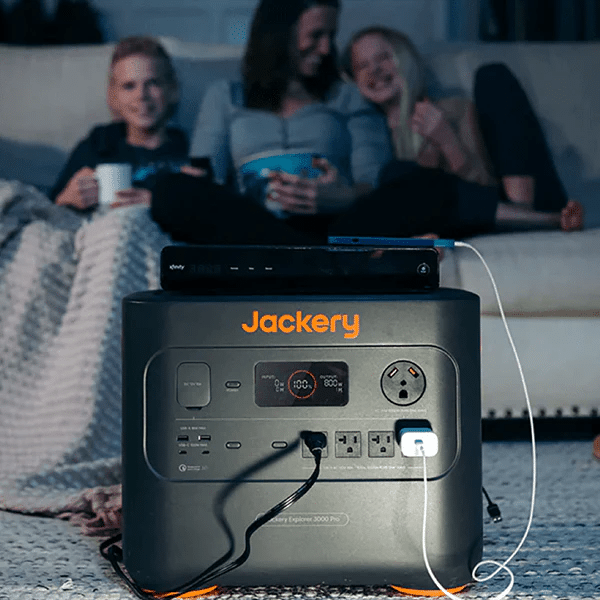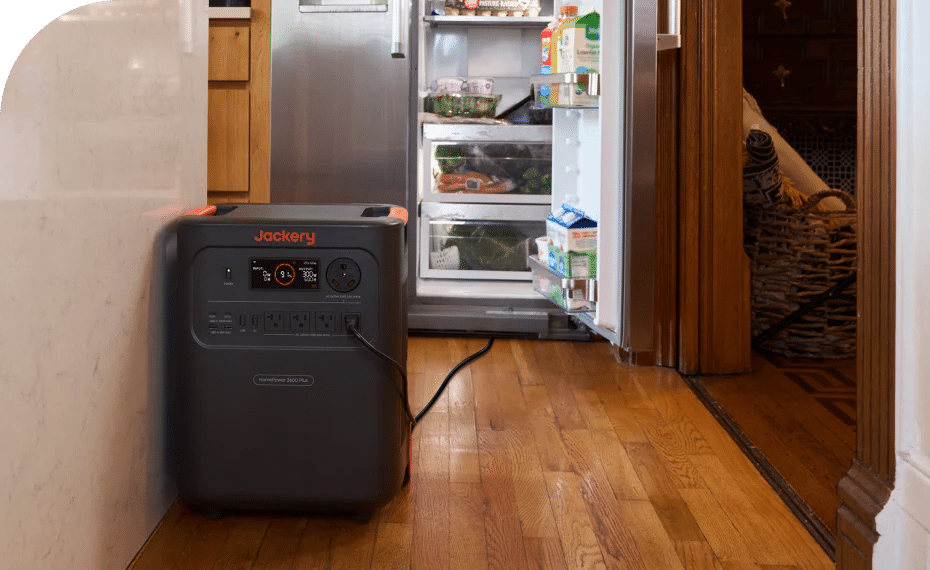Introduction
Winter in the U.S. can be magical. People enjoy snowy mornings, cozy indoors, and festive family gatherings. But when a winter storm knocks out power, that joy quickly turns stressful: Fridges shut down, food spoiled; heating systems stop working, leaving families shivering. Home offices lose internet access, cutting off remote workers. According to the U.S. Energy Information Administration, power outages now last an average of 8 hours per household per year, nearly double what it was a decade ago. In areas like Texas (2021 freeze) or California (planned outages during wildfire season), some families have gone days without electricity. That’s where the Jackery Solar Generator HomePower 3000 comes in. Built with 3,072 Wh LiFePO4 battery capacity and a true UPS system, it delivers essential home power for critical home circuits with the option to pair with solar panels for a sustainable, off-grid solution. This guide breaks down two of the most common blackout scenarios in the U.S. and explains why traditional power stations fail, and why the HomePower 3000 stands out as the most practical home battery backup for U.S. families.
Table of Contents
- Why Your Lights Go Out
- 2. What Happens When the Lights Go Out
- Two Common Blackout Scenarios in the U.S. (and Their Home Power Demands)
- Why Standard Power Stations Fail in Blackouts
- Two Must-Have Features for Essential Home Backup
- Jackery HomePower 3000: The Ultimate Essential Home Backup solution
- How It Performs in Real-World Testing
- Why It Outshines Competitors
- Conclusion
What You’ll Learn in This Article
Why blackouts happen
Why no household is immune
Why winter storms and summer heatwaves make essential home backup crucial
The science behind why standard portable power generators fail under pressure
The must-have features of a reliable solar generator for house use
Real-world results of the Jackery HomePower 3000
How to save money and stay future-ready with the right home battery backup
Why Your Lights Go Out: threat from Severe Weathers in the U.S
Severe weather in the U.S. is nothing new, but here’s the real kicker: it doesn’t just bring down trees or flood roads , it often takes out the power grid. And when the lights go off, daily life suddenly feels a lot less normal.
Think about it: energy runs everything. From your fridge and Wi-Fi router to medical devices, heating, and air conditioning, power is the invisible backbone of our routines. Severe weather threatens that backbone more often than most people realize.
Hurricanes are dangerous storms that can cause massive damage to the property, but they also snap power lines and blow over substations, so they can also leave us all without power in our homes. When Hurricane Ian made landfall in Florida in 2022, for instance, over 2.7 million people lost power. For days on end, these people had no way to refrigerate food, charge phones, or power medical equipment. We may not realize how much we need electricity until it’s gone: with no electricity, access to clean water can be disrupted, too, since water treatment facilities are powered by electricity, and suddenly, bottled water and ice are as precious as gold.
While tornadoes are a short-duration disaster, people can be in the dark for weeks as mangled electrical equipment presents hazards. Twisters can snap utility poles like toothpicks, and it can take a long time to restore electricity in more remote, rural areas where transmission lines can stretch for miles. Spoiled food and no hot showers are an annoyance, but for customers who can’t work from home or use online school, power outages can affect daily life for a long time. It’s easy to take electricity for granted until you lose it and realize just how much we take for granted.
The Texas freeze of 2021 is a great example of a winter storm disaster that can freeze both grids and homes. Millions of residents lost power as the grid buckled under the freezing conditions, and people were left to burn furniture, use gas ovens for warmth, or sleep in their cars. Hundreds of people lost their lives in the freeze, which is a reminder that the supply of energy is not a convenience, it’s a matter of life or death in some extreme weather conditions.
California utilities will sometimes proactively turn off electricity during wildfire season to prevent sparks from faulty equipment starting a blaze. Dubbed “Public Safety Power Shutoffs”, outages can last for hours or even days. For residents, that can mean no air conditioning on hot days, no refrigeration, and no way to charge devices if an evacuation order is given. It’s an unfortunate trade-off for residents caught between electricity and the threat of an uncontrolled wildfire.
Flooding is one of those disasters people don’t often think about until it’s too late. When heavy rain from a hurricane soaks the Midwest or South, rising water can sneak into street-level transformers, knock out substations, and ruin everything buried underground. The twist? Your house can be completely dry and you can still lose power. If the lines, vaults, or junctions that supply your neighborhood are flooded, the lights go out in your living room and you don’t know when they’ll come back on.
Flooding hits home for everyday people. Appliance after appliance beeps a polite “No More” when power vanishes, and one of the first is the fridge. After about a day, the grocery money you spent that morning is barely worth the frozen burritos you’ll have to toss. Extreme weather, be it heat or cold, kicks in next. That can quickly turn into a serious risk for toddlers, seniors, and anyone already dealing with health issues. The house may feel like a sauna or an ice box, and both are dangerous. To top it off, with the internet gone, Wi-Fi drops, your remote conference call freezes, and when the phone runs out of juice, you’re in a digital desert. No emails, no streaming, and no numbers saved to borrow a charger. Communication vanishes in an instant, yet everyday routines shift into survival mode.
You might suddenly find yourself without running water, too, especially if you depend on a well or if your town’s water system relies on pumps. For people on oxygen therapy or using CPAP machines, losing power is even more serious. Oxygen concentrators stop running, and life-support systems go dark. That’s why having a plan to protect your essential home power is a lifesaving necessity.
Blackouts can happen to anyone
When the lights go out, life goes from the daily schedule to the survival situation, wherein the matter of food safety is of foremost importance because refrigerators and freezers are of no use within 24 hours, and health threats quickly become deadly because extreme temperatures can be life-threatening, and especially for children, the elderly, or the sick. Secondly, because there is no connectivity, You’ll quickly lose Wi-Fi, the ability to work from home, and access to streaming services. You can also lose your water source, too, especially if you are on a well or city water that is dependent upon pumps, and for others, the deprivation of electrical power is life-threatening because life support such as CPAP machines and oxygen concentrators will simply stop working. As you can imagine, equipping yourself and your family members with essential home power isn’t just a luxury; it comes down to survival.
We normally think of power outages as a short-term inconvenience, but more and more intense severe weather is leading to longer and more severe-duration outages.
Life shifts from a comfortable routine to a survival mode when energy is cut, where food safety is a major concern as refrigerators and freezers become useless in less than 24 hours, and health risks quickly become dangerous as extreme cold or heat can be a serious threat, especially for kids, seniors, or those with medical conditions. Because without electricity, there won’t be Wi-Fi, work-from-home options, or streaming, and you won’t be able to communicate once your phone dies. In addition, you might not have access to water, particularly if you depend on a well or your city’s water system requires pumps. For some people, the absence of electricity poses a life-threatening risk because medical equipment like oxygen concentrators and CPAP machines will just stop functioning. All of this demonstrates that having access to essential home power is necessary for survival and not merely a convenience.
We frequently consider power outages to be short-term annoyances, but as severe weather events increase in frequency, outages are getting worse and lasting longer.
Two Common U.S. Blackout Scenarios (and Their Power Demands)
Scenario 1: Winter Blackout in the Midwest (Chicago, IL)
Conditions:
Temperatures drop to -15°C (5°F) with snow and ice covering power lines.
Families rely on electric heating pads, fridges, and internet routers to stay safe and connected.
Challenges:
Long-duration outages lasting 12–48 hours.
Heating is non-negotiable, especially for kids and seniors.
Power Must-Haves:
3,000+ Wh capacity to power fridge + router + small heater for at least 24 hours.
UPS function to instantly switch over and protect sensitive electronics.
Solar charging to extend runtime during multi-day outages.
Scenario 2: Summer Blackout in West Coast (Sacramento, CA)
Conditions:
Rolling blackouts triggered during peak demand in July/August.
Temperatures reach 105°F (40°C). Families rely on AC units, fans, and fridges.
Challenges:
Outages strike with little warning.
Grid strain means power can be down for 4–10 hours daily.
Power Must-Haves:
High surge capacity (7,200 W) to handle fridge compressor starts and AC motors.
Solar generator pairing for renewable recharging during sunny hours.
Portability to move between rooms or outdoor use with fans.

Why Standard Power Stations Fail in Blackouts
At first glance, many portable power stations look capable. But most budget units aren’t designed for long-duration or Essential Home Backup.
Here’s why:
- Battery Chemistry Limitations: Standard lithium-ion loses efficiency in extreme cold or when pushed to high loads.
- Short Lifespan: Many portable power only lasts 500–800 cycles (2–3 years of real use).
- Slow Recharge Rates: With only 300–500 W input, they can take 8–12 hours to recharge.
- No True UPS: They can’t switch fast enough to protect routers, PCs, or CPAP machines.
CSA-Tested Data (Canadian Standards Association):
- Standard lithium-ion retains only 30–35% capacity at -20°C (-4°F).
- Many units failed minimum reliability benchmarks for long-duration backup.
Two Must-Have Features for a Reliable Home Backup System
To avoid failure during a storm, your home solar generator needs:
Feature 1: LiFePO4 Battery
- Retains up to 95% capacity after a year (ZeroDrain™).
- Delivers 3,000+ full cycles,lasting 10 years of daily use.
- Performs in both extreme heat and freezing cold.

Feature 2: True UPS (≤20 ms Switch)
- Keeps internet routers, PCs, and medical devices running without interruption.
- Prevents data loss or damage during surges.
- Critical for modern remote workers and families with health equipment.

Jackery Solar Generator HomePower 3000: The Ultimate essential Home Backup solution
After testing 10+ portable power stations in Midwest and California, the Jackery Solar Generator HomePower 3000 emerged as the most practical solution for U.S. families.
Official Specs
- Battery: 3,072 Wh LiFePO4 (CSA-certified)
- Output: 3,600 W continuous, 7,200 W surge
- Outlets: 4 × 120 V AC (2,400 W combined) + 30 A RV port
- UPS: ≤20 ms
- Weight: ~60 lb (dual handles for easier carry)
- Recharging:
- AC wall (1,800 W) → 2.2 hrs
- AC + DC combo (2,500 W) → 1.7 hrs
- Solar (400 W) → ~11 hrs
Real-World Testing in U.S. Blackouts
Test 1: Midwest Winter Storm
- Powered a fridge (150 W), router, 2 LED lamps, and a 100 W heating pad.
- Ran for 26 hours straight with 12% battery left.
- Solar input on day 2 added 40% charge by afternoon.
Test 2: California Summer Blackout
- Supported mini AC unit (800 W), fridge, and 2 fans.
- UPS kicked in instantly when the grid cut out.
- Recharged to 80% in 4 hours with solar + AC input.

Frequently Asked Questions
Q: What is the most important thing to have in a blackout survival kit?
A: While everything is important, the most crucial items are a battery-operated light source, a NOAA weather radio to stay informed, and a three-day supply of food and water for everyone in your household.
Q: What does UPS mean and why is it important for my home office?
A: UPS stands for Uninterruptible Power Supply. It’s a feature that allows a solar generator to automatically switch to battery power the moment an outage occurs, preventing your computer and other devices from shutting down and causing you to lose your work.
Conclusion
Whether from winter storms, summer grid failures, or hurricanes, blackouts are becoming more frequent and costly. Families need more than a flashlight and a gas generator. They need a reliable, clean, and future-proof home battery backup. Don’t wait for the next storm. Secure your HomePower 3000 solar generator for your home today and give your family the confidence that you’ll stay powered, no matter what the weather brings.
